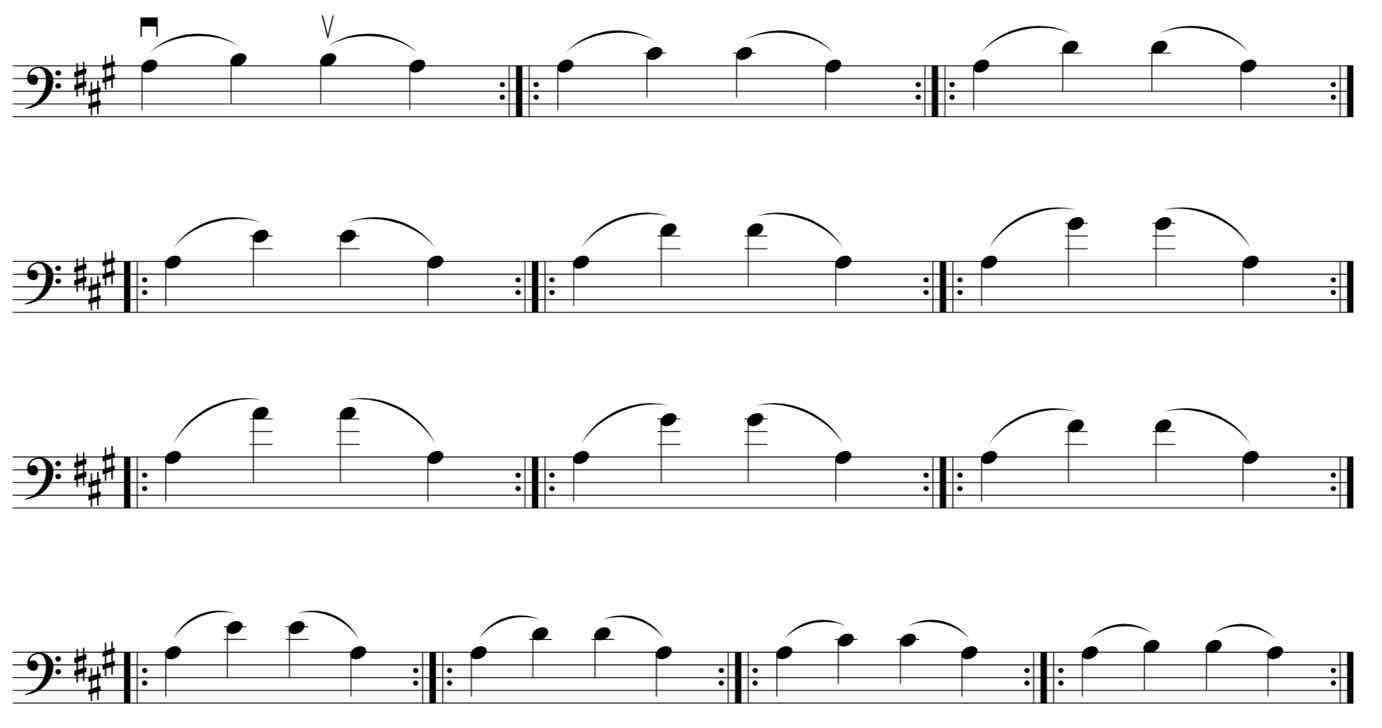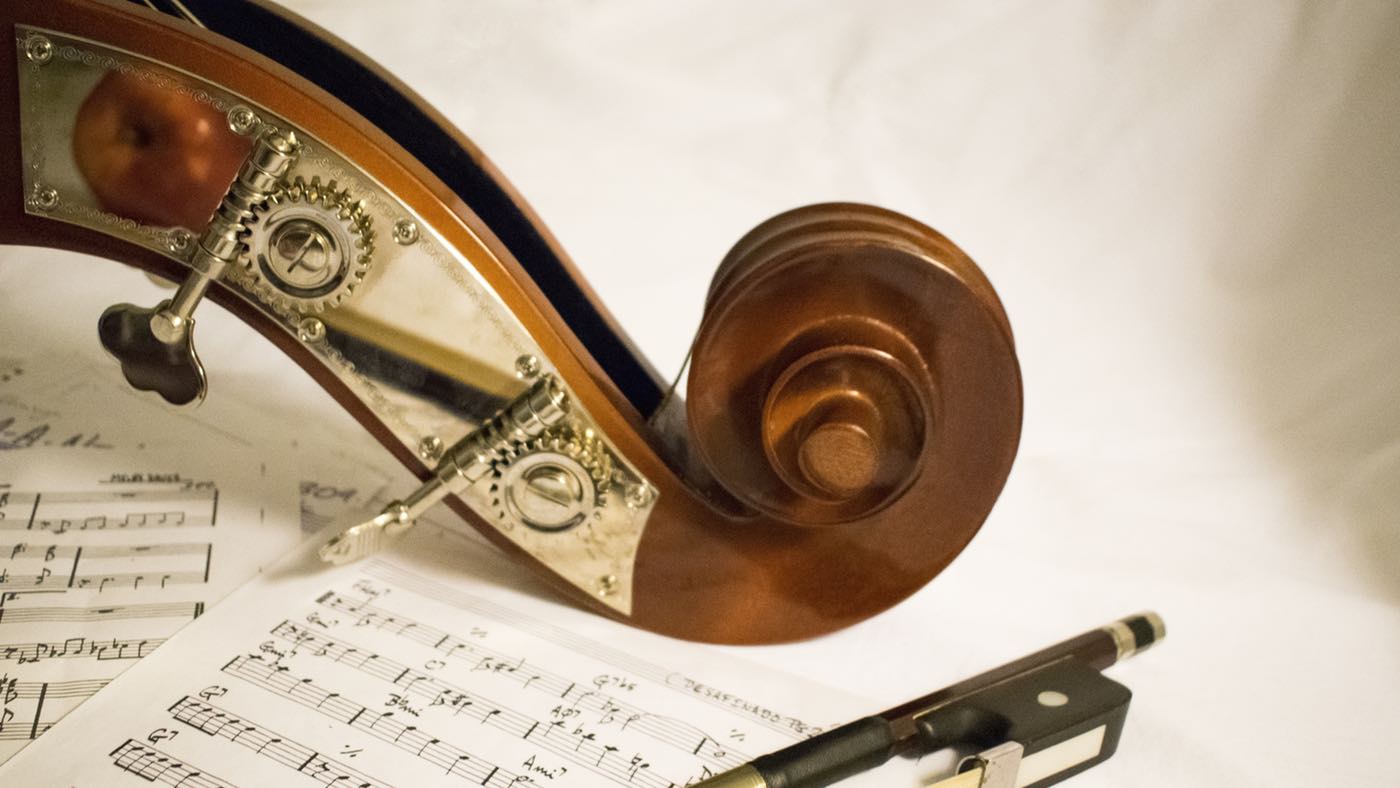Previous: Part 5 – Articulations
You can download this entire series as an eBook, and you can learn more about double bass technique on our weekly podcast Contrabass Conversations!
Part 6 – The “Daily Dozen”
I think of the exercises in this section as “intermediate level” exercises. I’m not introducing them when a student is starting out, but by the time we get to the second volume of Progressive Repertoire I’m beginning to add them in.
I like to call these exercises the “daily dozen.” There aren’t a dozen of them, but I like to touch upon all of them each day, even if only for a few seconds.
All of these exercises are simple but deep, and they touch upon fundamental principles of quality bass playing. Most of them have endless varieties to them. They can be learned on different strings, in different keys, with various bowings, dynamics, and articulations.
I’m presenting only one version of each of these, but use your imagination and find ways to alter them. Also, I have invented none of these exercises, so I attempt as best as possible to give credit to the great teachers from which I learned these!
Navigating the Bass
Most days, I’ll “reacquaint” myself with the instrument by gently sliding between the various harmonics that outline the Vance/Rabbath positions. Something about this exercise grounds me physically to the instrument. I find my hand gravitating naturally to these positions if I spend a few moments dusting them off:

G Major Three Octave Scale
What can I say? I love the G major scale.
While I certainly practice other scales, the way in which it lies on the bass is so great for warming up and getting the instrument ringing. If I only have time for one scale, it’s this one:

I’ll practice it with and without vibrato, slurring two, three, four, or more notes per bow, and with various articulations. I always progress from slow to fast, and simple to more complex, with emphasis on the slow and simple.
Shifting Drills
Gary Karr famously refers to these exercises as vomit exercises.
I’ve been told that it’s because:
- you “throw” your arm up the bass
- doing these makes you want to vomit!
Regardless, they’re fantastic exercises, and they’re actually more bowing exercises than left hand exercises. It’s hard to believe upon first glance, but it’s true!
The are the ultimate “simple but deep” exercises. Practice them with every conceivable fingering combination, extend them to two octaves, play them on other strings, add crescendos and decrescendos, and move them to different keys.
I have to give a huge shout-out to Jeff Bradetich, from whom I initially learned these exercises. Jeff’s book Double Bass: The Ultimate Challenge is a comprehensive look at this exercise and so many other key aspects of bass playing. It’s another must-have for any bassist’s library.
Here’s the most basic shifting drill exercise. Be sure to repeat each bar twice, and focus on smooth shifts and good bow placement throughout the exercise:

Max’s Magic
This finger dexterity exercise, named for University of Michigan bass professor and Cleveland Orchestra principal bassist Max Dimoff, is awesome. It’s another “simple but deep” exercise that can be learned going up one half step at a time.
I start students in half position, playing separate bows very slowly. We climb the bass one half step at a time, typically ending when we reach the G octave harmonic:

We’ll then add in slurs and start to increase the tempo. After that, we’ll do it on all the other strings. It’s a great way to develop strength and dexterity, and it’s a great warm-up exercise.
Progressive Scales
Here’s another exercise I learned from Jeff Bradetich. Each and every day, I try to do a shifting drill, Max’s Magic, and a progressive scale. I’ve been doing these for decades, and I find them to be shelfful in maintaining my skills.
In the progressive scale, we climb the scale i four note sequences. Each position gets two notes. Here’s a one octave A major scale as an example. As we did with the shifting drills, be sure to add slurs, change the key, learn it in two octaves (Jeff has great fingering for this in Double Bass: The Ultimate challenge), do different rhythms. The sky’s the limit:

After learning the pattern, I find slurring four notes per bow to be the most useful variant.
Remember–you can download this entire series as an eBook, and you can learn more about double bass technique on our weekly podcast Contrabass Conversations!
Bass News Right To Your Inbox!
Subscribe to get our weekly newsletter covering the double bass world.

